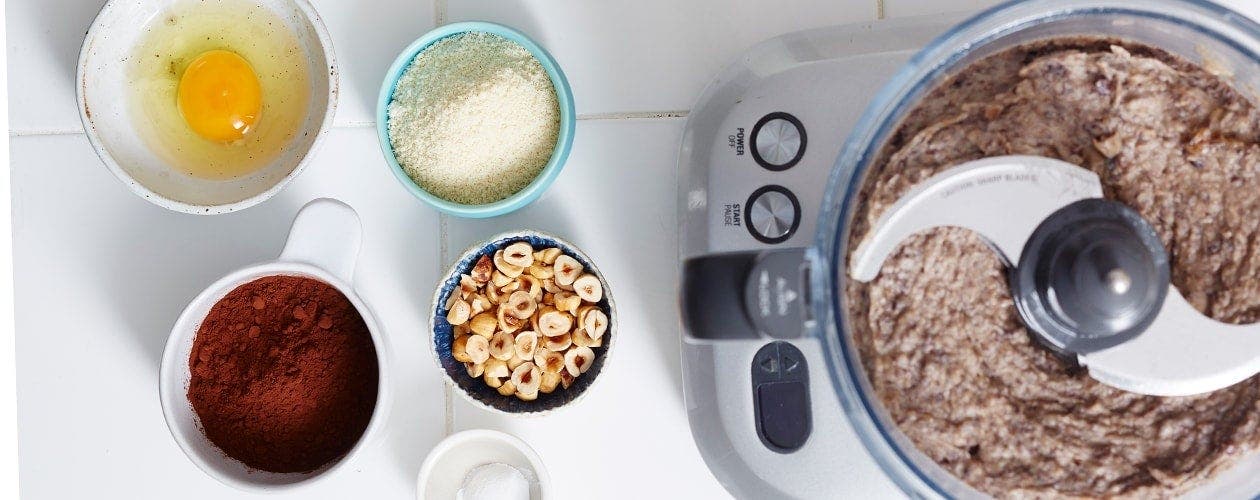Sugar substitutes for baking


Smart sugar alternatives
Sugar not only brings sweetness to baking, but it also adds volume, texture and colour, plus it acts as a preservative. Substitutes are possible but usually require a bit of experimenting. Keep in mind that in many cases substituting the sugar with an alternative may not increase the health benefits. In which case, you’re probably better off just having a smaller portion of the baked good.
If you do want to try baking with an alternative, start with a recipe you’re familiar with so you can check the consistency of the batter as you go and add a little more liquid or starch if needed. Natural fruit can also be a great sweetener. Extremely ripe bananas, fresh dates and rehydrated then pureed dried fruit (such as figs or prunes) all work well. Sweet veggies such as grated carrot, parsnip, beetroot and sweet potato are also good options.
Sugar substitutes
When baking, replace 1 cup (200g) of caster sugar with one of the following:
| Ingredient | Quantity | Instruction |
|---|---|---|
| Agave nectar | ⅔ cup (200g) | You need to reduce the liquid in the recipe by ¼ (60ml ) cup. Mix agave nectar with the fat or liquid you’re adding to the recipe. Reduce your oven by 20°C to avoid over-browning. Use baking paper to line trays or tins. You might want to start by only replacing half the sugar with nectar or your end product will taste very different. |
| Honey | ¼ cup (90g) | Honey has a strong flavour so it may overpower delicate cakes, which is why you only need a small amount. Reduce your oven by 20°C to avoid over-browning. Slightly reduce the liquid in the recipe (¼ cup liquid per cup of honey) to maintain texture. |
| Coconut sugar | 1 cup (240g) | This sugar has a coarse texture so if creamed with butter, you’ll see flecks of it in your baked goods. It takes longer than caster sugar to dissolve in liquid or fat. |
| Equal Spoonful (aspartame) | 1 cup | Equal Spoonful, a type of aspartame, replaces sugar in your baking spoonful for spoonful. Equal Spoonful contains only 8kJ per teaspoon, versus table sugar which has about 70kJ per teaspoon. |
| Liquid stevia | 1 tsp | When using stevia in place of caster sugar, you need to make up for the bulk missing from the recipe. Do this by adding ¼ cup of yogurt, apple sauce or egg whites for each cup of sugar you replace. |
| Xylitol | 1 cup (215g) | Baked goods don’t colour as much with xylitol so keep it for chocolate or coffee cakes. Sugar alcohols such as xylitol can have gastrointestinal side effects when used in large amounts. |
| Rice malt syrup | 1¼ cups (375g) | Reduce the liquid ingredients by a ¼ cup (60ml) and add ½ tsp bicarbonate soda per cup of rice malt syrup. |
Alternative or artificial sweeteners
Alternative or artificial sweeteners are used in a range of food products such as soft drinks, yogurt and confectionery. There are two main types: non-nutritive and nutritive.
The decision to switch to an alternative sweetener comes down to personal choice and applying common sense. Recent reviews by health bodies, including FSANZ, the European Food Safety Authority, and the US Food and Drug Administration, have verified the safety of natural and artificial sweeteners. However, that doesn’t mean that drinking a diet soft drink twice a day is a smart choice. Dental erosion can still occur, and you could be missing out on the opportunity to fuel your body with more nutritious and healthy choices.
Non-nutritive sweeteners
Although typically hundreds of times sweeter than sugar, these choices may not affect blood glucose levels:
- Aspartame
Discovered in 1965, aspartame is one of the most thoroughly researched ingredients in the world with more than 200 scientific studies. It’s made from two naturally occurring amino acids and is the main sweetener used in Diet Coke and the traditional powdered sweetener Equal. Considered 180-200 times sweeter than sugar, aspartame allows diet drinks to mimic the taste of regular versions.
Watch out! Aspartame contains phenylalanine, which should not be consumed by people with phenylketonuria, as they cannot digest it.
- Stevia
Sourced from a plant called stevioside, it’s 250-300 times sweeter than sugar. Many people like the idea of stevia being a natural plant source and stevia plants are available for you to grow in your own backyard for their sweet leaves.
Watch out! Stevia is commonly chemically extracted when made into commercial powders and may contain additives and bulking agents.
- Saccharin
Saccharin has been around since 1879 and gained popularity during sugar shortages. It was the sweetener of choice in the ’60s and ’70s as Sweet’n’Low sachets and Sugarine tablets. At least 300 times sweeter than sugar, so a little goes a long way!
Watch out! People who aren’t used to the sweetener often report a metallic aftertaste.
- Sucralose
Sucralose is derived from sugar and was first created in 1976. You’ll see it in shops marketed as Splenda. It’s 600 times sweeter than table sugar and was originally used in confectionery.
Watch out! Clinical studies have shown that Splenda does not affect blood glucose levels or insulin, however, people with diabetes still need to be mindful of how they use it with other baking ingredients.
Nutritive sweetener
- Sugar alcohols
These sweeteners include isomalt, sorbitol, mannitol and xylitol. They are often the basis of sugar-free chewing gum, lollies and chocolates.
Watch out! Sugar alcohol sweeteners are recommended at minimum levels only, because of the potential gastrointestinal side effects.
Find out about other natural sweeteners including sugar, honey, syrups, and nectars.
